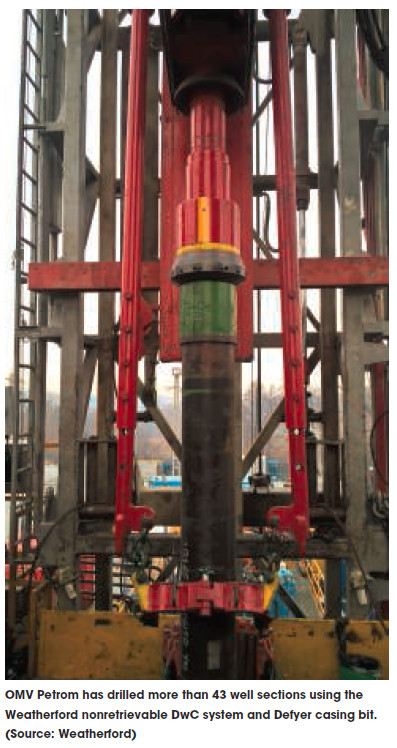While there are many good technology tools for managing production operating costs, their impact can only be optimized by also employing a better organizational approach to handling expenses. Presented here is a robust method for naturally integrating cost management into the everyday habits of a production operations staff. It can lead to more efficient and economical operating practices that will pay dividends now and also when the economic environment improves.
This is accomplished by spreading the authority and accountability for budgeting, booking, tracking and forecasting opex to the lowest level possible in the organization. Done properly, this works by a) increasing the transparency of where, how much and by whom expenditures are made, and b) creating accountability for expenditures with those who are actually making them.
The major benefits of this method are that it
• Lowers lease operating costs;
• Requires no capital investment;
• Clarifies where and how money is spent;
• Increases engagement and satisfaction of operations personnel; and
• Can lead to increased production and improved safety. But to be effective, the corporate culture must accommodate
• Trust between management and the field crew;
• Managers who are comfortable not only relinquishing significant control over expenditures to field personnel but supporting and mentoring them along the way;
• Field personnel who take responsibility for budgeting, booking, tracking and forecasting operating expenses for their areas; and
• Willingness to embrace the practice as a new and ongoing approach to business, not simply a temporary cost-cutting effort.
The problem
In many companies expenses are coded and booked into a Chart of Accounts (Figure 1) in such a way that it is nearly impossible to precisely track and analyze individual cost accounts at the lease level. Although standard accounting principles provide guidelines, they still allow flexibility in how operating expenses can be assigned. Throw in variations resulting from multiple human coders (including clerks and accountants who might be only peripherally involved in field operations) or automated allocation routines and misinterpretation of account code definitions, and it’s easy to see why accuracy is lost at all but the highest levels of the accounting hierarchy.

The solution
The solution is to create a system that removes ambiguity about account code definitions and about who is accountable for each expenditure. The first step is to openly discuss and decide on specific rules and practices that will be followed by all involved. While it is not necessary for every group in the company to settle on identical rules and practices, it is necessary that those within each work group agree to act consistently with each other.
It also is imperative that the company’s accounting system and policies be up to the task of facilitating this process. The system must facilitate drilling down to individual account codes and operating entities and be flexible enough to allow modification to account codes.
Step-by-step process
1. Obtain and interpret your company’s Chart of Accounts.
Review historical expenses in detail down to the lowest possible account code and the lowest possible operating entity. Understand current account definitions and actual usage, accruals and reversals, large regularly scheduled charges, issues related to government requirements, fixed vs. variable cost practices, and allocations to multiple entities.
2. Document the definition of each account code as it is currently being used.
Ask people independently how they use the codes. Look for codes used as “dumping grounds.” Understand who is using each code, including those in the office. Seek out ambiguity, redundancy, errors and inconsistency.
3. In a team discussion, redefine line items as they will be used going forward.
Give each code a clear and unique definition. Use the definitions as written, redefining or supplementing only where necessary. Collaborate with other users to address their unique needs and obtain their buy-in.
4. Assign each line item to an individual or a functional group.
Make each group immediately responsible for all charges to that code and, going forward, for budgeting as well. Follow up to assure that rules are being followed.
5. Hold regular (monthly, quarterly) meetings to discuss expense results.
Require each group to discuss their line items using performance graphs, clear explanations and updated forecasts. Use these meetings to hand out guidance and praise.
The result
As the new program takes hold, the changed behavior of the personnel becomes quickly obvious. Individuals understand costs more clearly as they take ownership. Expenses trend lower as “anonymous” coding is eliminated, and the ability to forecast costs at the lowest level develops.
These forecasts have increased legitimacy since they are produced by those who are spending the money. Ownership of forecasts by the “money spenders” drives commitment to meet or beat them. This leads to costs trending downward naturally with no deterioration of operating efficiency. In this environment, production rates, safety and job satisfaction tend to improve as well.

Potential roadblocks
This is not a quick fix. Real benefits show only after several forecast/reporting periods. However, those benefits are sustainable over the long term. Although the program can be implemented successfully in a discrete operating area, cooperation of related groups is necessary.
For example, if central accounting has permission to code charges to individual accounts or apply allocation routines to multiple accounts, those actions must be consistent with the new practice. Or, if operating cost budgets are linked to a company’s reserve system to facilitate quarterly Securities and Exchange Commission reporting requirements, the cooperation of the corporate reservoir engineering group is required.
Some companies attempt to smooth reported monthly operating expenses by use of routine accruals and reversals. If the company is unwilling to change this practice, an alternative is to generate custom reports that exclude those monthly adjustments. Allocation routines such as “district” charges can seriously affect individual entity expenditure reports. These charges, as well as the routines, must be reviewed and necessary corrections made.
Even when implemented during a downturn, the correct approach to operating expense management can yield long-term cost savings and a more collaborative work environment. Roadblocks can be surmounted with a little creativity and tenacity.
Recommended Reading
Report: Crescent Midstream Exploring $1.3B Sale
2024-04-23 - Sources say another company is considering $1.3B acquisition for Crescent Midstream’s facilities and pipelines focused on Louisiana and the Gulf of Mexico.
Targa Resources Forecasts Rising Profits on 2024 Exports
2024-02-20 - Midstream company Targa Resources reports a record fourth quarter in volumes and NGL fractionation.
Midstream Operators See Strong NGL Performance in Q4
2024-02-20 - Export demand drives a record fourth quarter as companies including Enterprise Products Partners, MPLX and Williams look to expand in the NGL market.
Summit Midstream Launches Double E Pipeline Open Season
2024-04-02 - The Double E pipeline is set to deliver gas to the Waha Hub before the Matterhorn Express pipeline provides sorely needed takeaway capacity, an analyst said.
Kinder Morgan Sees Need for Another Permian NatGas Pipeline
2024-04-18 - Negative prices, tight capacity and upcoming demand are driving natural gas leaders at Kinder Morgan to think about more takeaway capacity.





